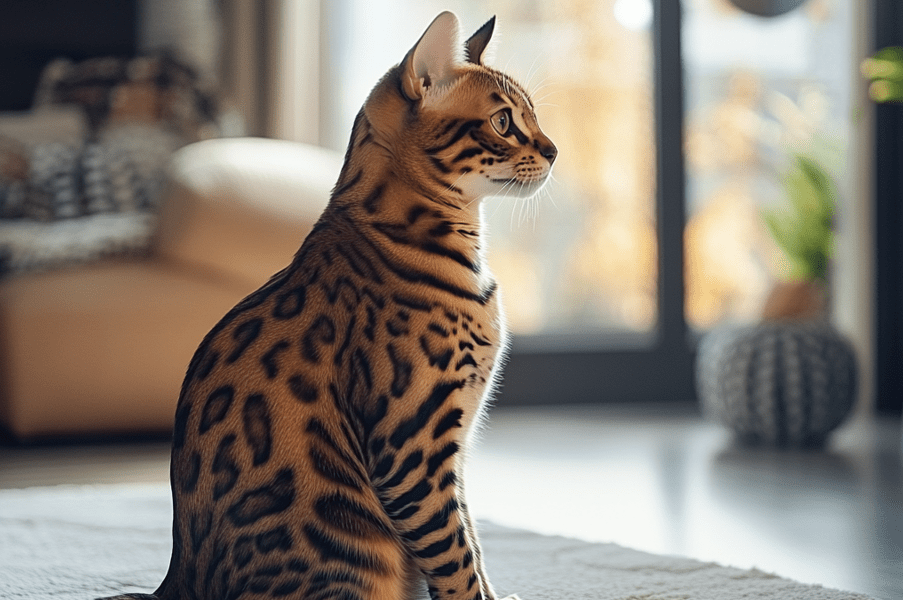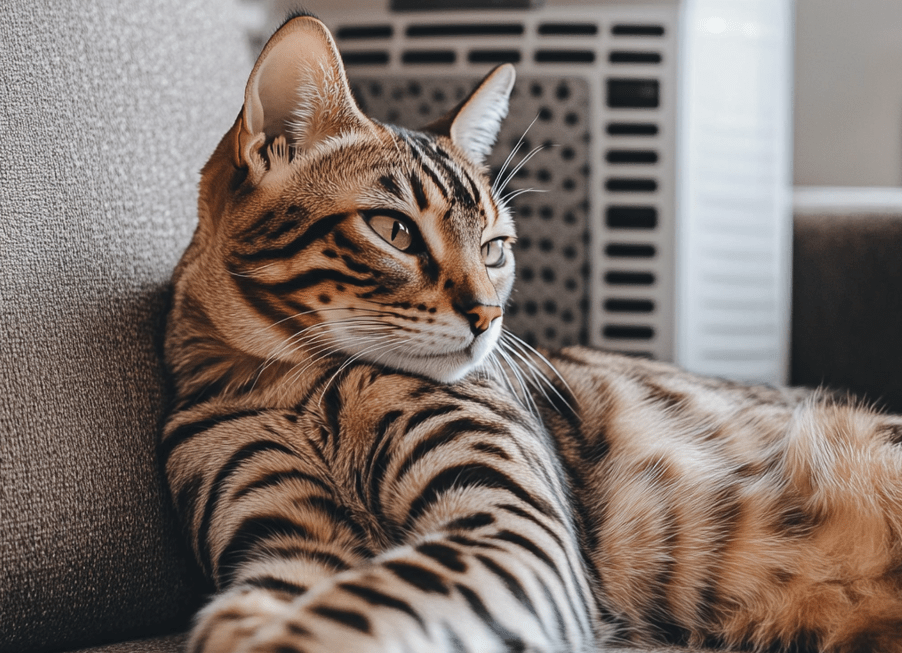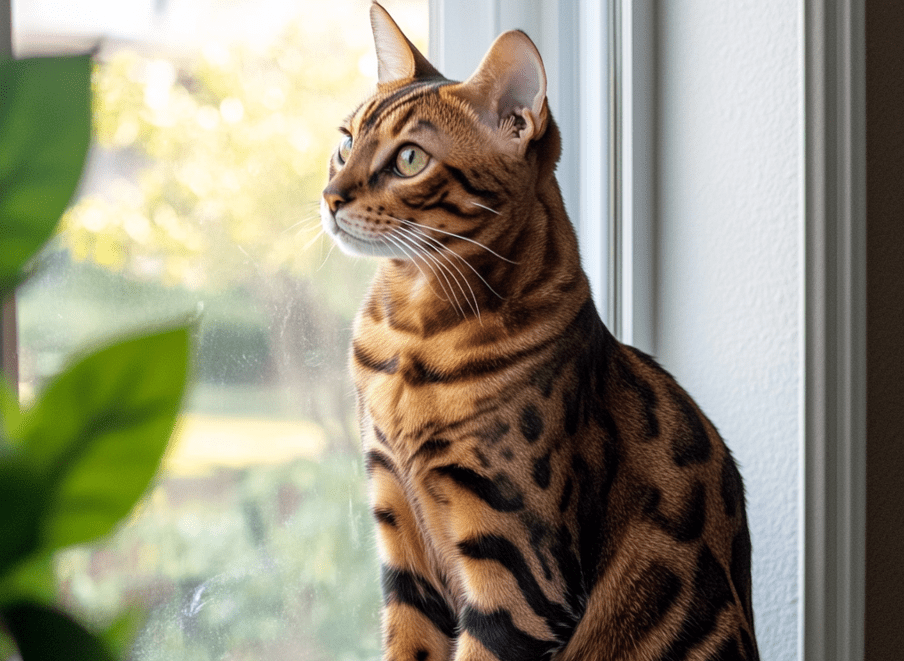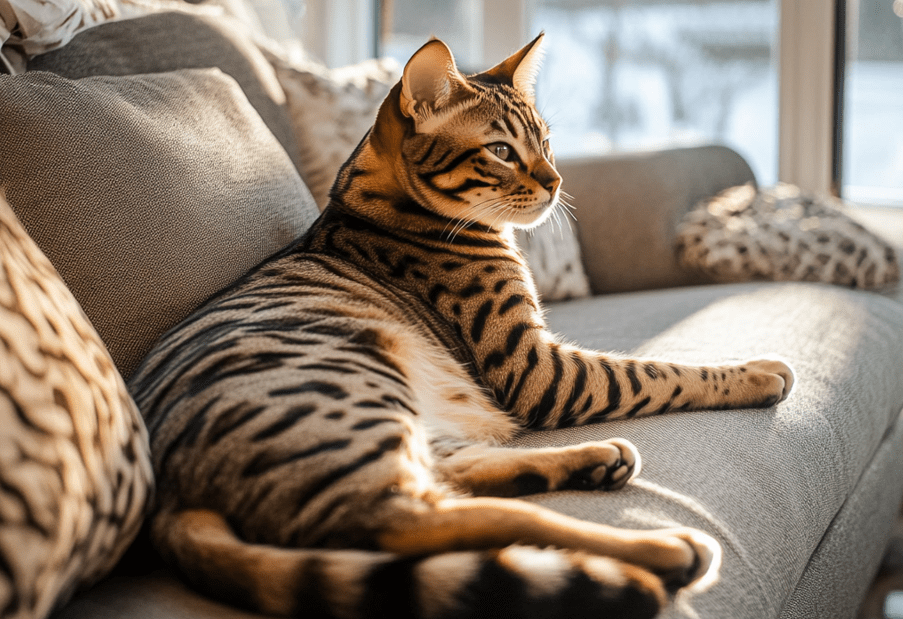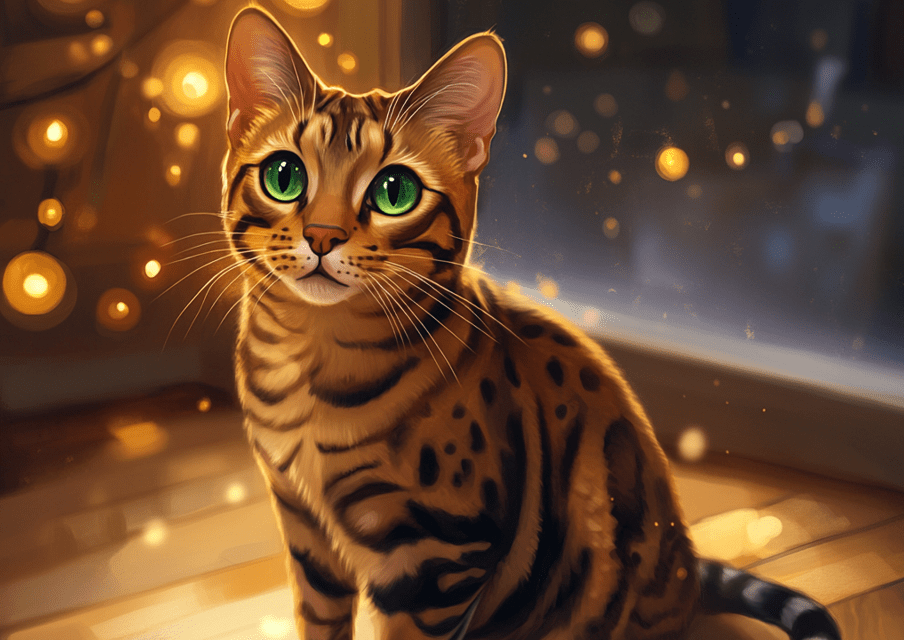
Bengal cats are very lively, enjoy playing, and are known for their friendly nature. They quickly become popular as pet cats due to their wonderful fur and vibrant behavior, which is very natural.
The Bengal cat personality is truly unique. Although they may appear wild from the outside, Bengal cats have very soft and sweet hearts. Cat lovers greatly admire them for their winning personalities, which sets them apart from other cat breeds. Let’s dive into their personality traits –
Personality and General Characteristics
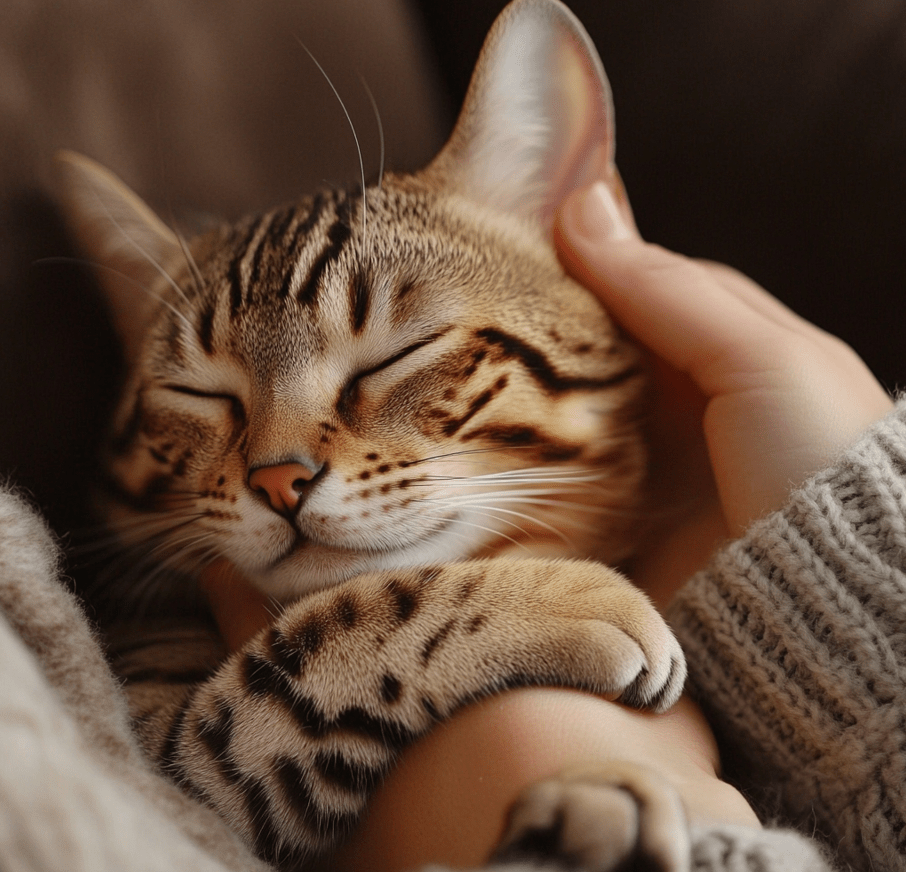
These lovely creatures are friendly, although they may prefer one particular family member. Bengal cats are loyal and know how to give love. If you play with them and give them attention, they will respond with love and joy.
Bengal cats behave very well with children, other cats, and even family dogs. However, it’s important to remember that they need to be socialized and allowed to interact with family members from a young age. Introducing a new pet to adult Bengal cats might be problematic because they have already become accustomed to their own routines.
Vocalization and Communication
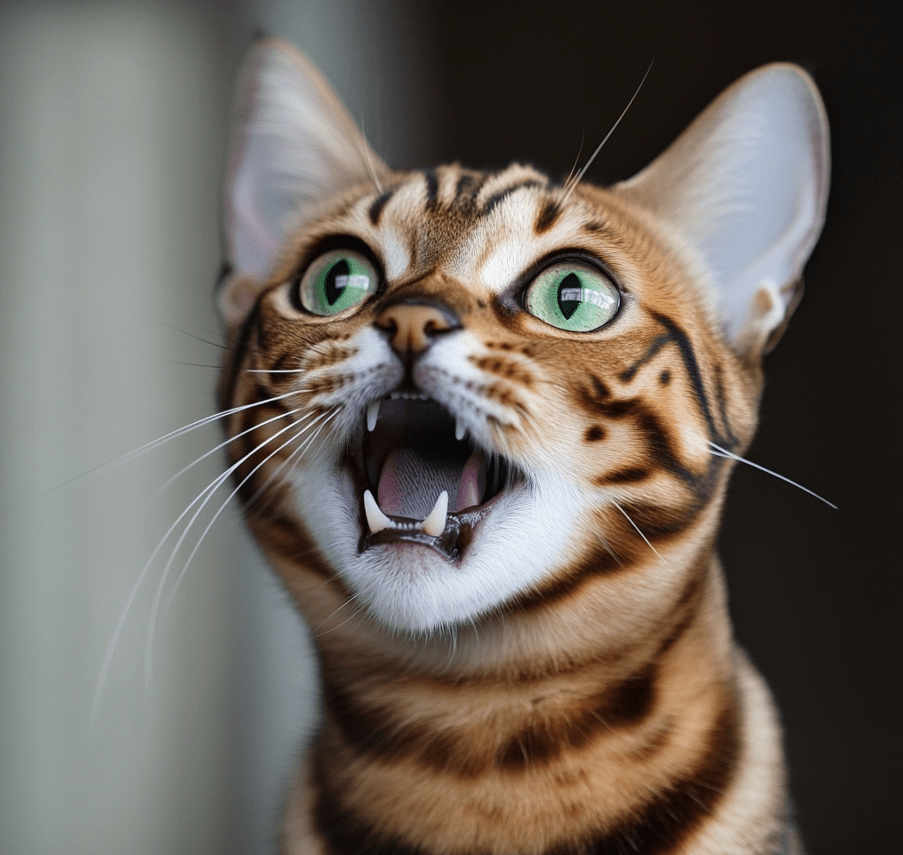
Bengal cats blend very easily with their owners. They are not overly affectionate, but can clearly communicate their needs – especially when their food bowl is empty or they want to play.
When you return home after a long time, they give a royal welcome, even making song-like sounds. San Francisco cat behaviorist Marilyn Krieger has reported that Bengals are known for this loud vocalization. However, not all Bengals are loud callers. Her own Bengal cat Molly has a melodious voice, with whom she often performs duets.
Having a Bengal cat means you don’t need an alarm clock. If feeding time is at 7 AM, they will loudly remind you at 6:50 AM. When you return after being away for a long time, they will complain with meows as if saying “Why did you leave me alone?”
Bengals always have something to say. Whether in soft tones or loud ones – they love to talk. Some people like it, others don’t. However, talking with Bengals is a fun experience because they express their feelings whenever they get the chance.
Intelligence and Learning Ability
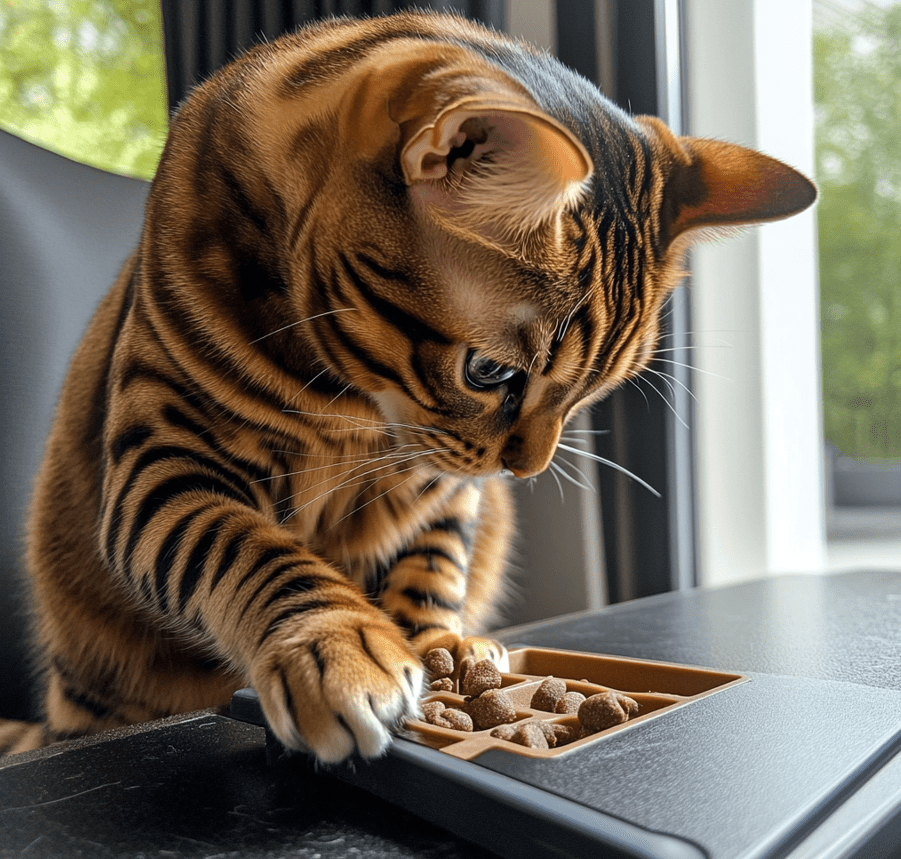
Among the unique characteristics of Bengal cats, their intelligence is one of the most distinctive features that sets them apart from other cats. Their sharp intelligence, inherited from their wild ancestor the Asian leopard cat, gives them quick learning abilities.
Through special training, they can be taught various techniques, trained to follow commands, and even walk on a leash. This makes Bengal cats an excellent choice for those who want a more interactive and trainable pet.
A special aspect of their intelligence is emotional perception. They can understand the home environment, human gestures, and even variations in voice tone. Your mental state easily influences their behavior.
These intelligent creatures really enjoy clicker-training and attention. They can be given interactive toys or puzzle toys to challenge their minds, and when they learn to use them, they can be rewarded with food or affection.
Within the first week of arriving home, a Bengal kitten learns how to control its owner. They know how to get their needs met and how to express when they don’t like something. Their amusing activities provide hours of entertainment. For example, some Bengals like to hide household items, while others learn to play fetch at a very young age.
Activity and Play Behavior
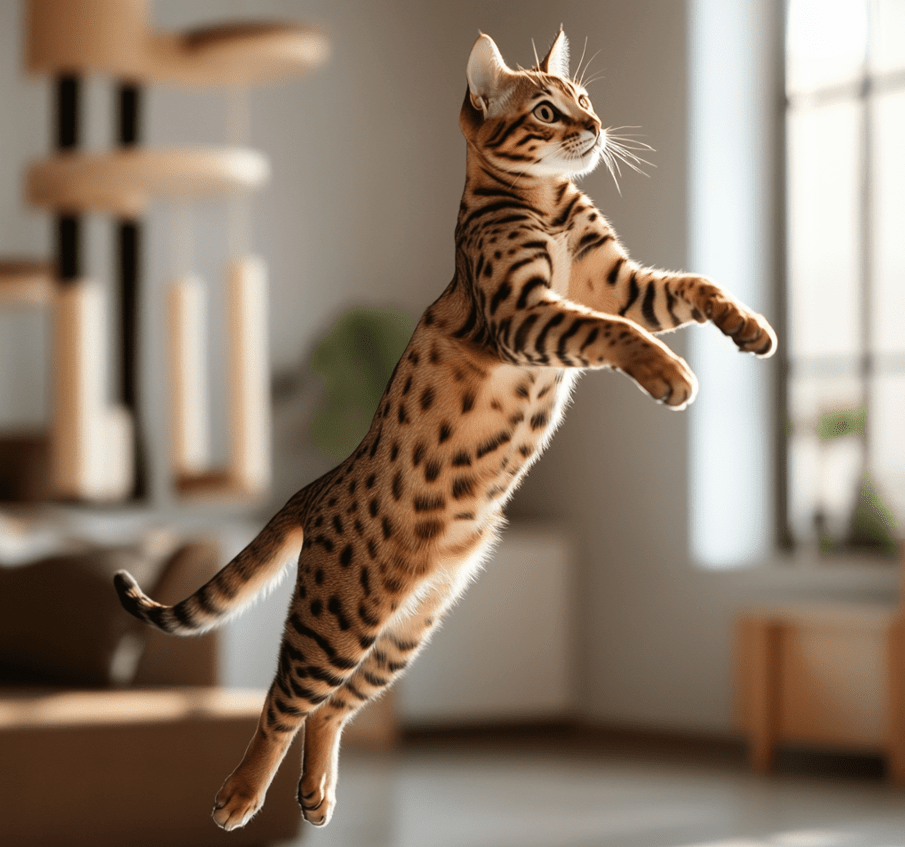
In Bengal cats’ lives, play is not just for fun, but an essential aspect. Running, jumping, and climbing are their favorite activities. To keep them healthy and happy, it’s crucial to provide plenty of toys and playtime. If you have the time and energy, they can play for hours.
About 40% of the time, Bengals behave like excellent athletes. They can run fast, climb doors and cabinets, and jump to great heights. Many Bengals can leap directly onto their owner’s shoulders from a distance, trying to help with tasks like opening doors or checking cabinets. They jump around, roam about, turn lights on and off, and even do somersaults with joy.
Bengal kittens, in particular, are very energetic. When excited, they shake, wag their tails, or puff them up like raccoons. During these times, their character becomes like ‘Tigger’ from ‘Winnie the Pooh‘ – curious, hyperactive, enthusiastic, but with a heart of gold.
It’s only natural for a Bengal to love playing! Like children, they have abundant energy and remain active even as adults. Their biting or breaking things often stems from their intense desire to play. For Bengals, play isn’t just weekend entertainment – it’s an expression of their hunting instincts and as important as food and water. Although they sleep a lot, their waking hours are spent following their owners around and finding fun ways to spend time.
Social Needs and Companionship
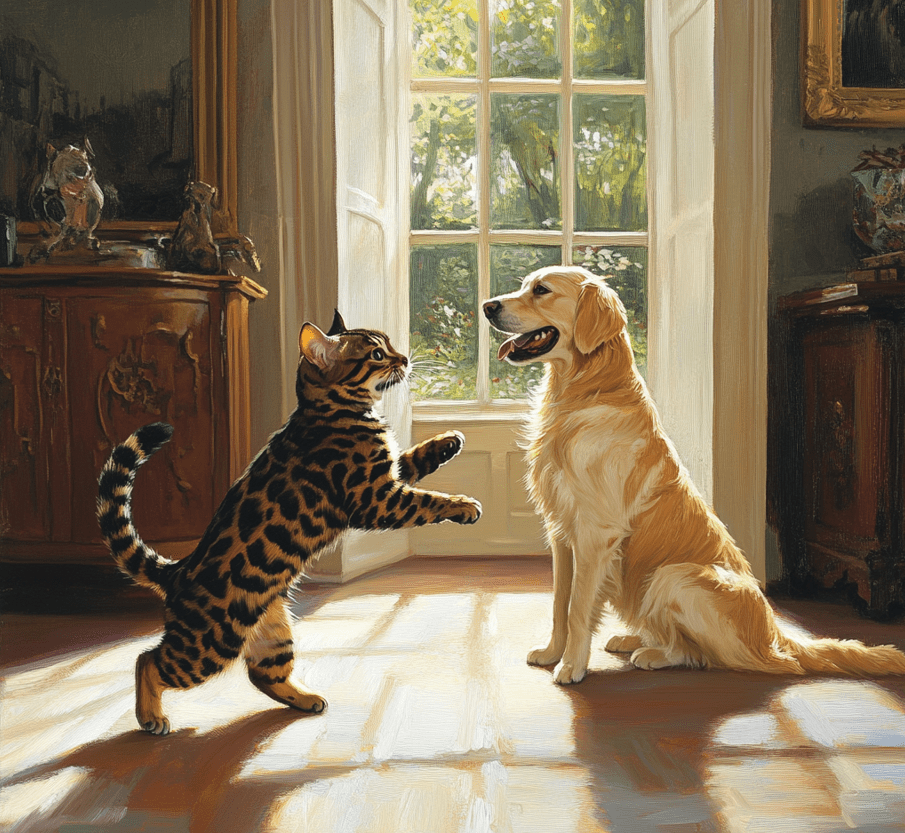
Bengal cats are remarkably social creatures and feel most comfortable in human company. They enjoy attention and interaction, making them ideal pets for families with children or other pets. Due to their intelligence, they have higher social and physical needs compared to other cats.
It’s not advisable to leave them alone at home all day, as Bengals need companionship – especially from their owner. The best aspect of a Bengal cat is their ability to form deep bonds with their owner. When left alone for long periods, they suffer, becoming destructive due to boredom and loneliness. Therefore, most Bengals do better when they have another pet companion.
Although they love humans, they also value their independence. They prefer to show affection on their own terms. While not the most cuddly breed, when they show love, it’s sincere and precious.
Their brave nature can sometimes translate into territorial behavior towards other cats. To avoid conflicts with neighboring cats, it’s essential to ensure adequate resources, play opportunities, food, and space. If such problems arise, it’s advisable to consult a qualified animal behaviorist.
Unique Traits and Behaviors
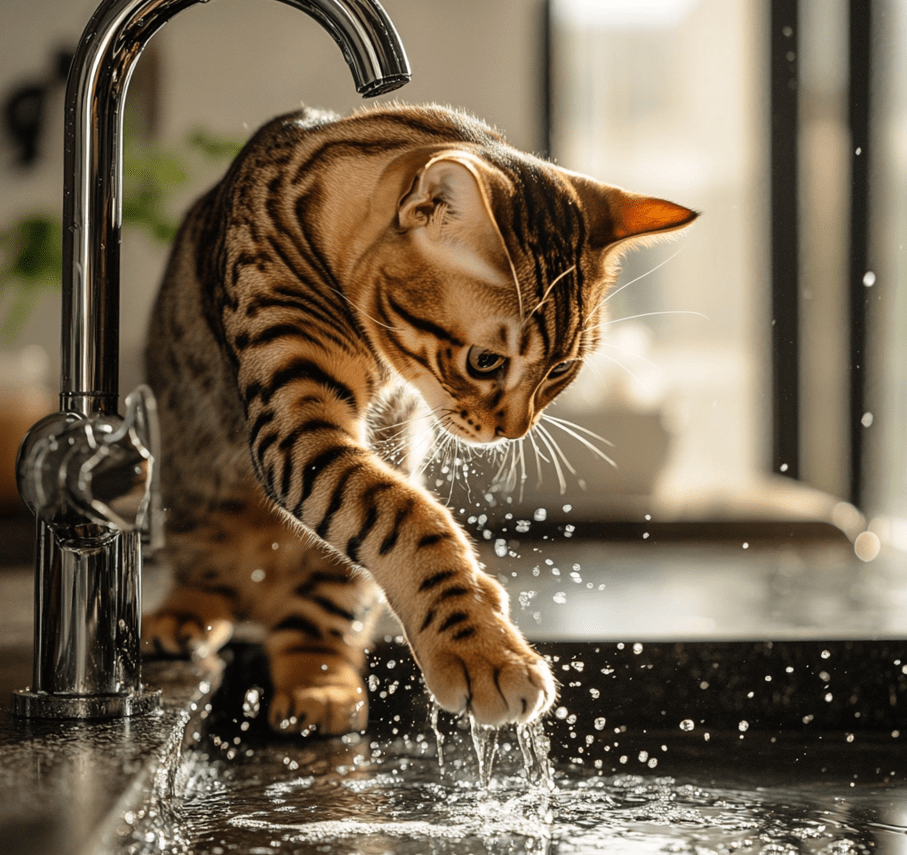
Unlike other cats, Bengal cats love water. They enjoy playing in water bowls and even taking baths with their owners. This affinity for water is believed to come from their wild ancestors’ hunting and fishing instincts.
You can provide them with motion-sensitive faucets or pet fountains. They enjoy swimming in tubs, showers, or pools. When drinking water, they dip their paws and lap it up. However, caution is needed with aquariums, as they are skilled hunters.
Bengals are also skilled climbers. The higher they can climb, the better. Therefore, tall cat trees and window perches are necessary for them.
They generally get along well with other pets, even dogs. However, due to their territorial nature, if you want multiple cats, it’s better to raise them together. They also get along well with children because their playful mentality matches.
Female Bengal cats are particularly caring and maternal. They make excellent mothers and care not only for their own kittens but also for other family pets.
Bengal Tabbies, which result from mixing Bengal and Tabby cats, inherit characteristics from both parents. Like Bengals, they are intelligent, active, and water-loving. They can be seen exploring their environment and playing with water.
Potential Challenges about their personality
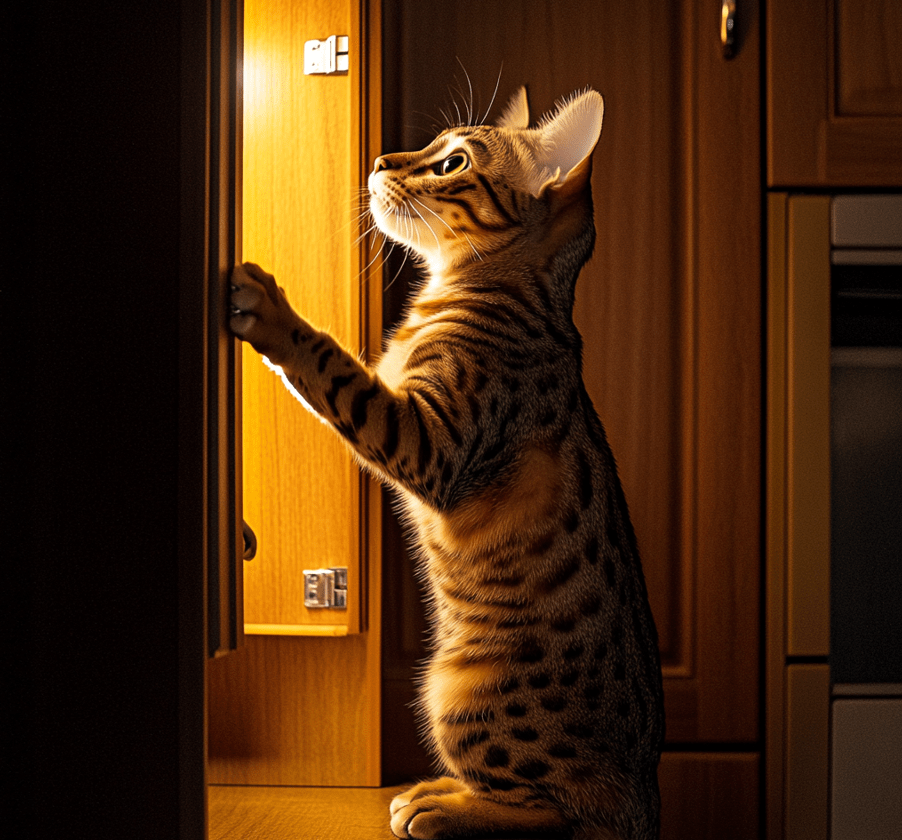
A Bengal cat may not be suitable for everyone, especially first-time cat owners. While their intelligent, alert, friendly, curious, and active nature can be fun, it can also be challenging. They demand substantial attention and interaction.
When frustrated, they can become destructive. They examine things closely, open drawers and cabinets, and may even hide jewelry. Due to their intelligence, keeping them active is crucial to avoid behavioral problems. When frustrated, they can become aggressive and express their disappointment through loud vocalizations.
They are extremely curious – wanting to know how things work, what reactions they cause, or how things taste. They easily suffer from loneliness. A Bengal cat can be a great companion for someone who works from home.
To minimize these issues, a responsible owner can meet all their Bengal cat’s needs. For example, if they’re away from home frequently, they could get another cat for companionship. Toys can be rotated regularly to prevent boredom.

